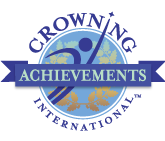
The Art of Doing Nothing
The art of doing nothing is difficult to master for those of us with type A personality. On my last vacation, while at the beach enjoying the beautiful view, I was thinking I should be doing something. I waited for that moment for months and now I was right there. Although enjoying the moment, my mind was thinking about the opportunity to write something or to strategize about the business. It was as if I felt obligated to be doing something other than resting even though I own my business. I have yet to learn how to clear and calm my mind.
Why is it so hard to relax the mind?
Like with everything else, it’s lack of practice. The more we practice something, the better we become at it. But why should we practice calming our mind? I believe it’s the same reason athletes need to rest their bodies. Just as the body needs physical rest from working out, the mind needs time to refresh and replenish. And that only comes from intentionally taking time to rest.
And why is it important to rest the mind?
Because a clear mind increases creativity both at home and in the job. If you are in a leadership position, you need a clear and rested mind to make sound decisions consistently. Often leaders walk around exhausted and have no time to rest their mind. Vacations only happen a couple of times per year. And often those vacations include a trip somewhere with a daily agenda of day trips and places to visit. While these trips can be fun, your mind is learning consistently and there is no time to rest the mind.
And although some vacations are relaxed and low key, they don’t happen often enough to make a big difference. Therefore, it is important to learn how to relax the mind daily. The point is that sometimes even when we are “doing nothing” physically, our mind is busy. We make lists of things that must get done, or continually think about something. There is never a “blank moment” to relax the mind.
Here are five things I’m committed to practicing in 2024 to learn to calm and rest my mind:
- Be intentional about resting my mind. Without intentionality, there is no commitment and goals become only wishes.
- Plan time to rest my body and mind. Just as we have time to sleep at night, we should plan time to rest both the body and the mind.
- Share my goal with someone I can stay accountable to. Sharing our goals increases the chances of us meeting the goal.
- Track the times I rest my mind during each day. Tracking helps to show results and stay motivated.
- Set the goal of 15 minutes of mind rest each day.
The art of doing nothing takes practice—especially when the goal is to do nothing both physically and mentally for a few minutes each day. During the workday, one way you could practice is by taking a lunch break. When I was a full-time employee at a community bank, I was always so busy that I often skipped lunch. Even though I ate at my desk “to save time”, my mind was exhausted by the end of the day. I wondered if it would be more productive to take the lunch break after all. And most people would say, yes, it is more productive.
Now that I’m self-employed I am still tempted to step away for lunch. But I force myself to get up and take a mental break from work. I hope this blog encourages you to take some steps to learn the art of doing nothing and rest both your body and mind.

